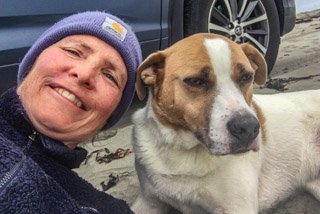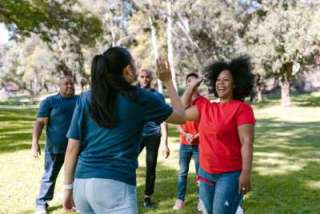
How to Make Change Stick: Client Questions Answered
We’re halfway through March Madness. I’ve set an intention to complete all of my practicum coaching sessions by March 31. The NBC-HWC (National Board Certified Health and Wellness Coach) certification requires fifty before we can sit for the 5-hour final in July. My clients and I have had so much fun and success that I thought I would share some of their insights with you. The four questions featured below illustrate how to take specific, concrete, simple steps to make change stick. Each is representative of how I help people through my new coaching company, Thrive Clues.
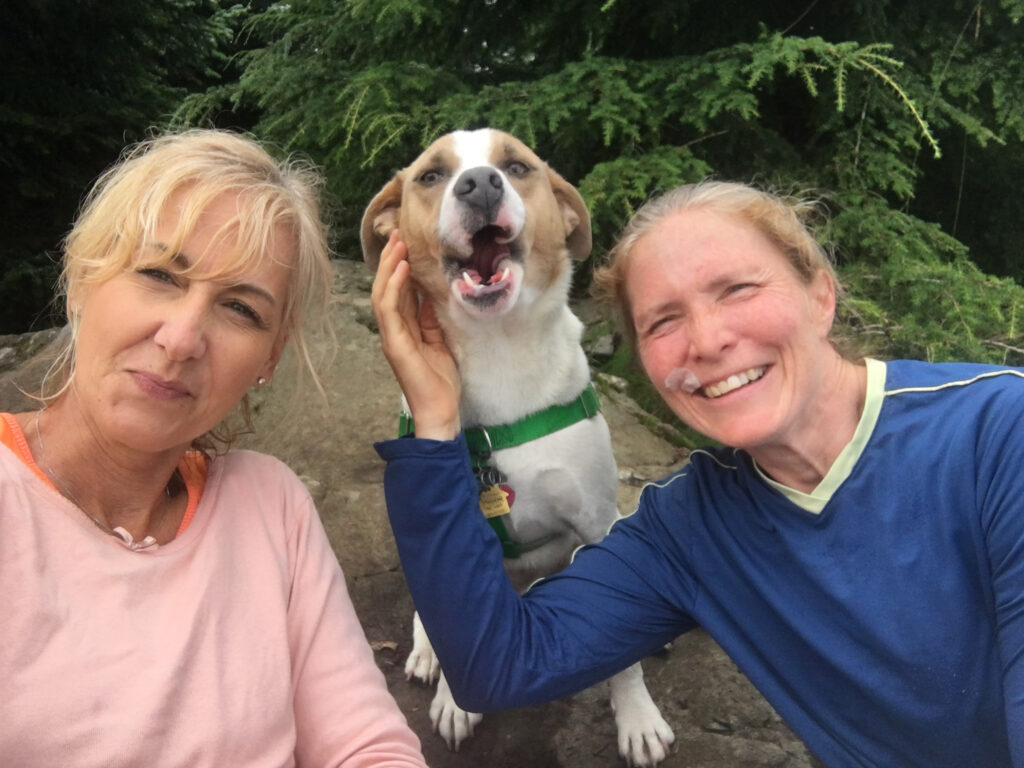
Increase Satiation of Lunchtime Salads
One client wanted help to increase the satisfaction of her vegetarian salads at lunchtime. She was already doing several things right: pre-purchased packaged greens thrown together with protein. Simple, quick, and effective. But she always craved something sweet afterward, even though she was full. Perhaps you can relate. To make change stick, we needed to find an easy solution that was readily available.
I asked what her source of fat was. Bingo! We found the missing piece. We discussed how she could try adding a thumb-sized portion of avocado oil, olive oil, or half an avocado like the picture below.

A week later, she reported that she was astonished at how one simple change made the salad so much more satisfying. She felt sated longer so she ate less the rest of the day. She no longer overdid it on dessert. Win!
Do you have a tricky meal you’d like to overhaul? Send me an Email to set up a FREE 15-minute consultation to troubleshoot your problem.
Make Change Stick: Increase Autonomy In Hiking
Another client loves to hike, but it seems she does better when someone else sets up the destination and meeting times. She also likes having someone with her while she gains confidence and familiarity on new-to-her trails.
To increase her autonomy and self-sufficiency, we developed a new hiking plan. She would continue to hike with me every other week on new-to-her “stretch” trails, which would build her confidence. On the Tuesdays between our hikes, she would explore a trail on her own that we’d already done together.
Since she’d participated in five consecutive hikes, we talked about how she might increase her weekly exercise to support her new passion and make change stick. When she suggested walking four days a week, I gently reminded her that going from one day of exercise per week to five might feel overwhelming. We’re shooting for success, not shame, guilt, or blame. Going from one to two weekly workouts would feel more sustainable. It could help her build a new exercise habit that will stick.


Nudge the Notch
By taking small steps, what I call “nudging the notch,” you can sneak up on your goals without pain, injury, overwhelm, or strain. She finally agreed to add just one thing. After reviewing how to set SMART goals, she decided to add a weekly walk between hikes.
Are you having difficulty figuring out how to set up your hiking training? Send me an Email to set up a FREE 15-minute consultation to troubleshoot.
Add Protein to Breakfast
What if you have four habits you want to incorporate, today? At Thrive Clues we use Precision Nutrition principles of identifying the “low-hanging fruit” or the “big rocks,” meaning those habits that are easiest to change or make the biggest impact.
One of my long-term clients wanted to investigate eating more vegetables, controlling portion size, adding healthy fats, and getting a better handle on breakfasts. All are great habits, at the right time. When I challenged her for the next week to start with one thing, she chose to focus on breakfast. Once she proves she can make change stick around breakfast protein, she can go on to others.
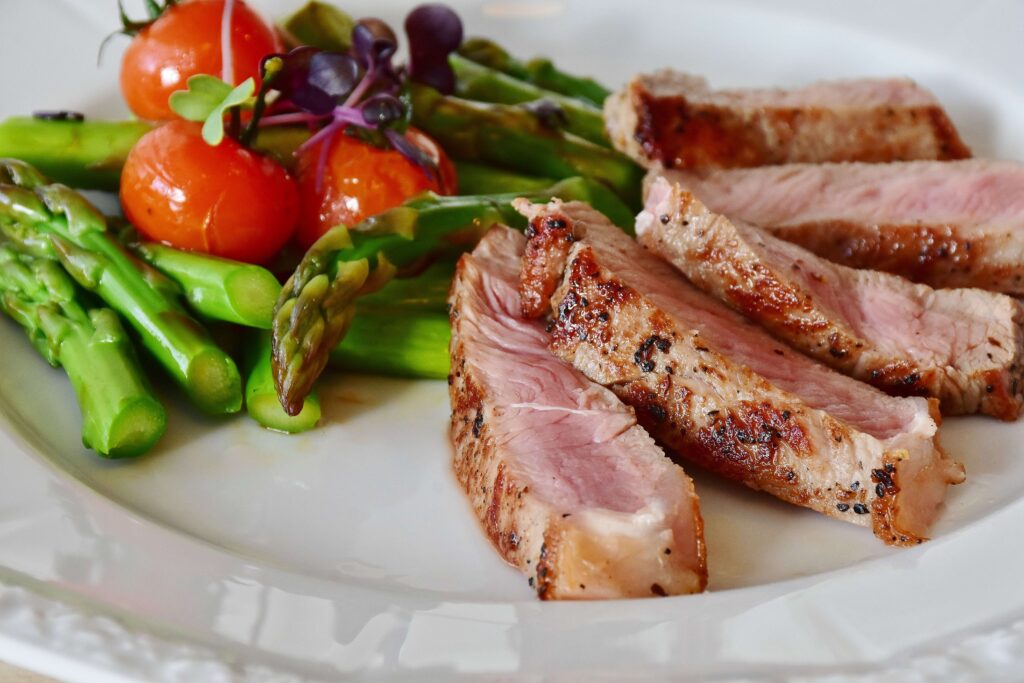
Breakfast Defined
For many people, “breakfast” means either sausage, bacon, eggs (high fat and cholesterol) or pancakes, donuts, waffles, or pastries (high fat, sugar, and gluten) or perhaps cereal with milk or yogurt (processed foods). Breakfast is literally whatever food we use to “break our fast.”
We discussed what her current morning meal looks like and what her ideal might be. When she asked me what I eat for the first meal of the day, I said I start with protein which often means leftovers from the night before. Homemade pad Thai, ground chicken with half a Japanese sweet potato, and pulled pork and veggies don’t sound like “breakfast foods” to most people. Why not?
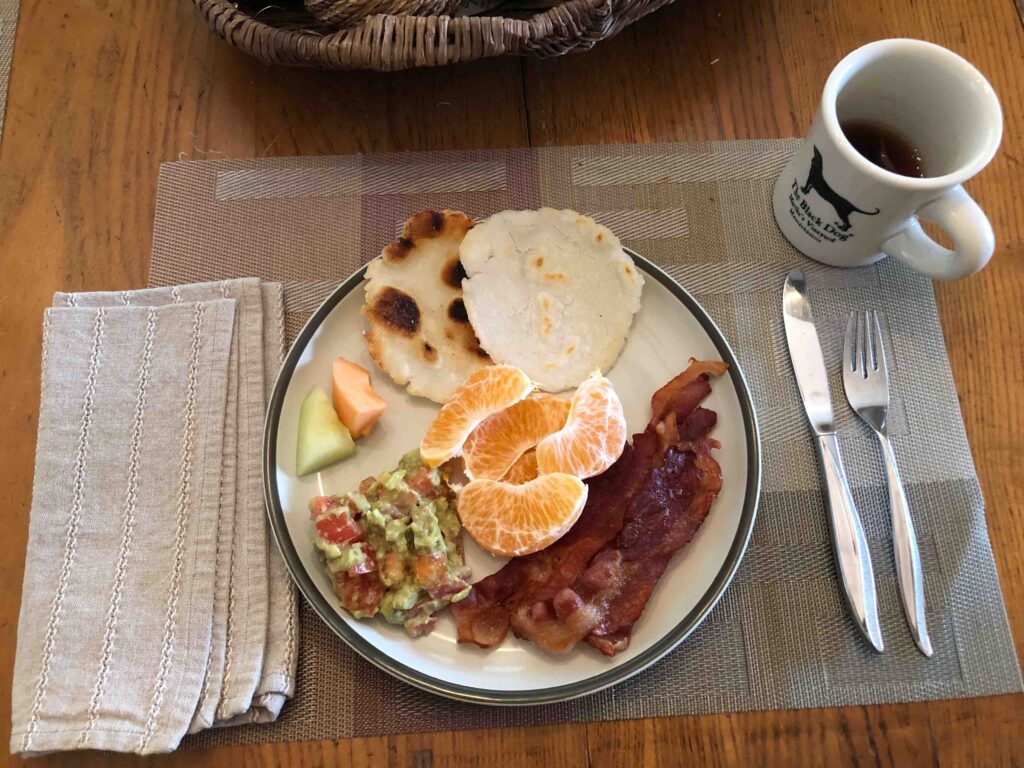
General Mills, Kellogg’s, and other producers of cereal know exactly how to make palatable, highly addictive foods. Psst – sugar! Take a look at your labels. I challenge you to find a tasty cereal that has under 6 grams of sugar per serving. They don’t exist. Those that do taste a little like twigs and bark.
What Protein Do You Like?
Instead, I invited her to think WAY outside the box to find what proteins she likes. Could you make a morning meal around salmon and eggs? What about a chicken thigh with a little rice and guacamole? A lean burger patty could be very tasty any time of day. And don’t forget protein shakes for those rushed mornings when you want something easy that will support you. The first step is to rewrite old scripts.
Would you like to discuss redefining your meals so that you get away from old habits that no longer serve you? Send me an Email to set up a FREE 15-minute consultation.
Make Change Stick: Reframe Exercise as Movement
The most common conversation with clients I’ve had the past two weeks has been to reframe exercise as moving the body. Anything other than sitting on the couch or lying down counts. How relieved people are when I say they don’t have to go to the gym for an hour-long sweaty sufferfest. Nor do they have to endure mind-numbing time on the “dreadmill”. Some of my conversations revealed that clients are a lot closer than they thought to the national recommendations for movement.

National Guidelines
The US Department of Health and Human Services (HHS) recommends the following Physical Activity Guidelines for Americans. It’s a 118-page PDF document so I’ll summarize. All adults (with modifications for age/abilities) should aim to get the following movement per week:
- AT LEAST 150 minutes of moderate-intensity movement — anything that gets the heart beating faster. This could be dancing. Walking a dog. Caring for horses. Carrying golf equipment for 18 holes. Pickleball.
- Or, if not point one, AT LEAST 75 minutes of high-intensity movement. Jogging. Swimming laps. Vigorous bike riding. Cross-country skiing. Hiking with a pack. Boxing intervals that leave you breathless.
- AT LEAST 2 strength training workouts per week that involve all the major muscles in the body.
- For seniors, including balance training is also important.
- There are additional benefits to doing more than 300 minutes of movement per week.

How do you stack up? Are you getting close to the national movement guidelines when you look at what you do in a week? If not, how might you get more strength training or aerobic movement? What do you need to do to make change stick?
If you are struggling to find enjoyable ways to move your body, send me an Email to set up a FREE 15-minute consultation. Let’s get you on the path toward making change stick.



